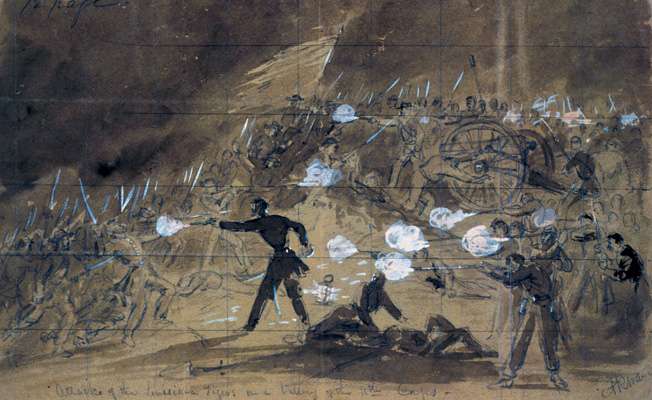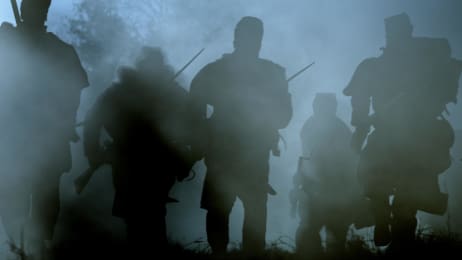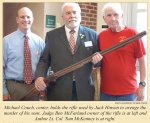
Hell on earth...
That is what many survivors of the battle would say later. Ironically, what would become the single largest military engagement fought on US soil and the largest battle fought in the western hemisphere in the age of black gunpowder, and which will lead to over 53,000 men dead or wounded, began when several vanguards of Robert E. Lee's army, advancing far ahead of the main body foraging for supplies, encounter a Union cavalry patrol. As more troops from both sides converge via all of the roads that intersect in this region of Pennsylvania, the fighting escalates out of control as both armies dig in for what they know will be a decisive encounter.
The Army of Northern Virginia, at it's peak strength of 75,000 men at arms, and riding on a crest of a spectacular wave of victories across the south, crosses into Pennsylvania to strike what General Robert E. Lee hopes will be the decisive blow that will end the war in the favor of the Confederacy. A war which had already raged for two years. More importantly, a successful Confederate invasion of the North might even persuade the major European powers to intervene on the Confederacy's behalf with materiel and industrial resources.
DAY 1
JULY 1, 1863
...And it begins with an almost absolute rout of the Union Army, which quickly fell back towards the town center in the face of well coordinated and well organized Confederate onslaughts. Two Confederate brigades led by James Archer and Joe Davis encounter several Union cavalry units on the Chambersburg Pike. They were quickly brushed aside as the main force directly behind them thunder on towards the town.
The Army of Northern Virginia, 75,000 strong, advances towards enemy positions on the Chambersburg Pike in sweltering 100+ degree summer heat.

After devastating the Union 1st Corps with an accurate and unwavering barrage of artillery, Ewell's line advances straight for the town center, each man firing at his own pace and delivering a merciless rain of bullets at the exhausted defenders, who fled, leaving behind over 1,000 dead and wounded.

Major General John F. Reynolds arrives on scene with the Union 1st Corps, only to be shelled by massed Confederate artillery from Gen. Richard Ewell's 2nd Corps, firmly dug in on Oak Hill. The Union 1st Corps falls into headlong retreat after suffering devastating casualties, including Gen. Reynolds, who was killed by a rifle bullet. What was left of the 1st Corps was now fighting a desperate rear guard action as troops from Ewell's line pursue them right through the streets of the town itself.
With the exception of the small breakthrough achieved by the 6th Wisconsin at the railroad cut, the first day of the battle was a disaster for the Union army.

By nightfall, the Army of Northern Virginia had complete control over Gettysburg and the surrounding country. With the exception of a single Confederate regiment being surrounded and forced to surrender at an unfinished railroad cut north of the Chambersburg Pike by the Union 6th Wisconsin 'Iron Brigade', the first day of the battle had resulted in a total retreat of every Union force deployed on the field that day, with some units suffering over 30% to 50% casualties as they barely escaped encirclement.
As Confederate troops patrolled the streets of the town and regrouped their lines, General Meade orders the Army of the Potomac to fortify their own positions on a high ridge known as Cemetery Hill. It was a choice that will ultimately decide the result of the battle in the days to come...
Not including the uppermost image, the rest of the images in this post are from the History Channel's epic 2011 docudrama.
Last edited:









:max_bytes(150000):strip_icc()/illustration-of-general-lewis-armistead-at-the-battle-of-gettysburg-517201008-5ab29e2843a1030036a5b872.jpg)

